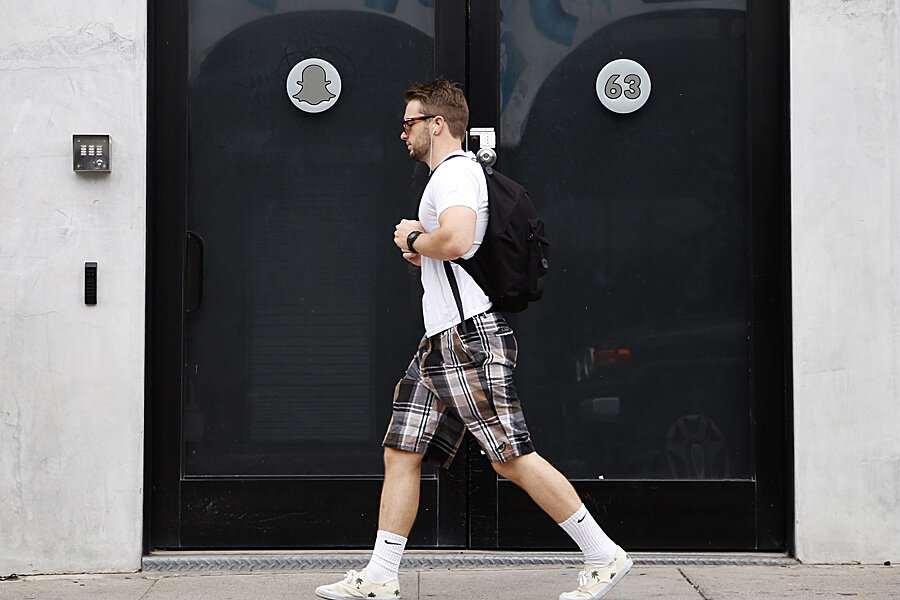Snapchat rolls out 'Snapcash' peer-to-peer payment app
Loading...
Another player jumped into the mobile payments market the other day: Snapchat.
The ephemeral photo-sharing app now lets you send money to friends with Snapcash, a feature that works through the app’s chat function. It was developed with Square, the San Francisco-based mobile payments company, which will process money sent through the service.
To start, users 18 and older enter their Visa or MasterCard debit card information in the app, where it’s saved and used for transactions. To send your Snapchat friends money, type the dollar amount into a message—for example, “$20 for dinner.” The app will recognize the dollar symbol and turn the yellow “send” button into a green Snapcash button. When you press the green button, your money will be directly transferred to your contact’s debit card and processed in one or two business days.
You can send up to $250 a week, or upgrade to send up to $2,500. If you send more than $250 in a week, you’ll be asked to enter your full name, birth date and Social Security number for verification. You can receive up to $1,000 over a 30-day period, and you’ll also be prompted to give your personal information if more than that is sent to you. The service only works within the 50 U.S. states.
Whether users will adopt the new feature remains to be seen, especially with a slew of other peer-to-peer payment platforms already established, including Venmo, Paypal and Square Cash. Mobile payments are expected to grow to a $142 billion industry in five years, according to Forrester Research.
“It’s questionable whether people who feel comfortable using Snapchat to send silly pictures to their friends will feel comfortable entering their debit card information,” says Heidi Liebenguth, managing partner at Crone Consulting, which advises clients on mobile payments strategies.
Skeptics took to Twitter to express doubts about Snapcash, including security concerns, almost as soon as the service was announced. Some cited an incident in which hackers made public thousands of private Snapchat photos last month.
“Soo a bunch of snaps get leaked and now they expect me to give them my bank info, no thanks #snapcash,” Twitter user Alex George said. On its website, Snapchat said Oct. 14 that the hack breached a third-party site that stores images sent with the app and warned that users of such add-ons may put themselves at risk by giving out their personal information.
The possibility of Snapcash being used to charge for pornography sent over Snapchat raises other security concerns, says Richard Crone, Crone Consulting’s founder. While pictures sent with the app display for no more than 10 seconds, delivering cash to the sender means providing your debit card information to Snapchat—and that won’t disappear.
“If anything, Snapchat is the antithesis of safety and security and authentication,” he says. “Snapchat is expired, perishable, vulnerable communication. You don’t want a funds transfer to be vulnerable.”
To protect against fraud, users can opt to be prompted to enter their debit card security code, called a CVV number, with every transaction. Additionally, since Square Cash processes the payments, money sent through Snapcash undergoes Square’s encrypted security process.
Katie Baynes, spokeswoman for Square, calls Snapchat a “natural gathering place” for discussing activities with friends that may call for money to change hands, such as buying concert tickets or party supplies. Snapcash will allow users to chip in “directly from their conversation,” she says.





